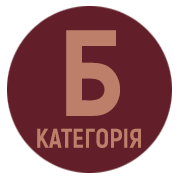LEXICOSEMANTIC TRANSFER MECHANISMS IN THE COVID-ASSOCIATED UKRAINIAN TARGET TEXT
DOI:
https://doi.org/10.24919/2522-4565.2021.45.32Keywords:
lexicosemantic transfer, COVID-associated lexis, medical translationAbstract
The submitted study deals with the description of lexicosemantic transfer mechanisms in the COVID-associated Ukrainian target text. The topicality is attributed to the universal (pananthropological) nature and immediate causation of the COVID-associated lexis, at present accounting for a lion’s share of medical information subject to the interlingual and intercultural rendering. The novelty is determined by the exploration of functioning lexicosemantic transfer sub-models in the COVID-associated Ukrainian target text, their distribution and productivity extent. The key aim of our study is to single out and describe the universal and culture-specific lexicosemantic transfer mechanisms in the COVID-associated Ukrainian target text. The study was performed on a complete sample, using the descriptive and contrastive methods, comparative translation analysis, and contextual analysis. The results we have obtained testify to the COVID-associated lexis being a culture-specific construct, reflecting national specifics of the healthcare system management, prophylactic, treatment and vaccination methods prevalent in certain countries. Our sample demonstrates the preponderance of adaptive strategies of the COVID-associated lexis processing, among them the lexicosemantic transfer being the most productive. Furthermore, the lexicosemantic transfer involves four functional sub-models of unequal distribution in the sample. The most productive instruments of lexicosemantic transfer are affixation (sub-models 1, 2), abbreviation and contamination (hybridization) realized according to the sub-model 1. Among the specific descriptors of the sample, there is a close association with a country (region) of provenance, with a source initially registering (creating) the lexical units; and a restricted number of direct borrowings functioning in the Ukrainian language as terms or brand names.
References
Дорофеєва М.С. Синергетика перекладу спеціальних текстів (німецько-український напрям) : монографія. Київ : Видавничий дім Дмитра Бураго, 2017. 520 с.
Поворознюк Р.В. Медичний переклад: теорія та практика : монографія : у 2-х т. Київ : Заславський О.Ю., 2019. Т. 1. 2019. 367 с.
Поворознюк Р.В. Переклад медичних текстів: теорія та практика : монографія. Київ : Заславський О.Ю., 2017. 220 с.
Попова М.В. Сравнительный анализ понятийного содержания терминов «трансфер», «трансференция» и «интерференция» в отечественной и зарубежной лингвистике. Актуальные вопросы современной филологии и журналистики. 2018. № 2(29). С. 10–13.
Проскурин С.Г. Принципы репликации культурной информации. Критика и семиотика. 2015. № 2. С. 51–64.
Українська мова. Енциклопедія. Київ : Українська енциклопедія ім. М.П. Бажана, 2004. 820 с.
Crystal, D. (2011). A Little Book of Language (Little Histories) (Illustrated ed.). Yale University Press.
Crystal, D. (2018). The Cambridge Encyclopedia of the English Language (3rd ed.). Cambridge University Press.
Grosjean, F (2011). An attempt to isolate, and then differentiate, transfer and interference. International Journal of Bilingualism, 16 (1), 11–21. URL: https://doi.org/10.1177/1367006911403210.
Rogers, M. (2004). Multidimensionality in Concepts Systems: A Bilingual Textual Perspective, Terminology, 10(2), 215–240. URL: https://doi.org/10.1075/term.10.2.04rog.
Thorn, T. (2021, April 26). #CORONASPEAK – the language of Covid-19 goes viral – 2. Tony Thorne. URL: https://language-and-innovation.com/2020/04/15/coronaspeakpart-2- the-language-of-covid-19-goes-viral/
Toury, G. (2012). Descriptive Translation Studies – and beyond. Amsterdam; Philadelphia : John Benjamins Publishing Company.



